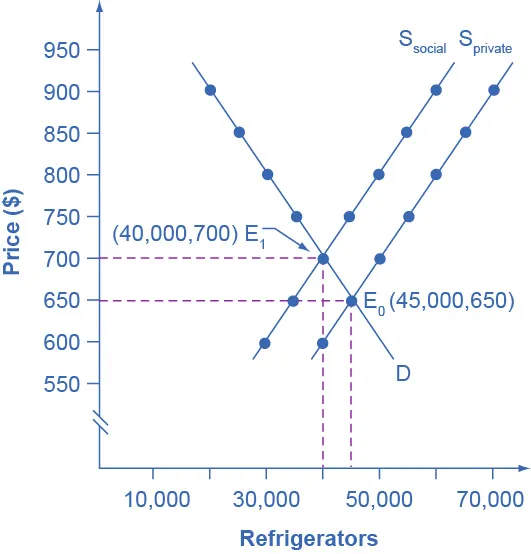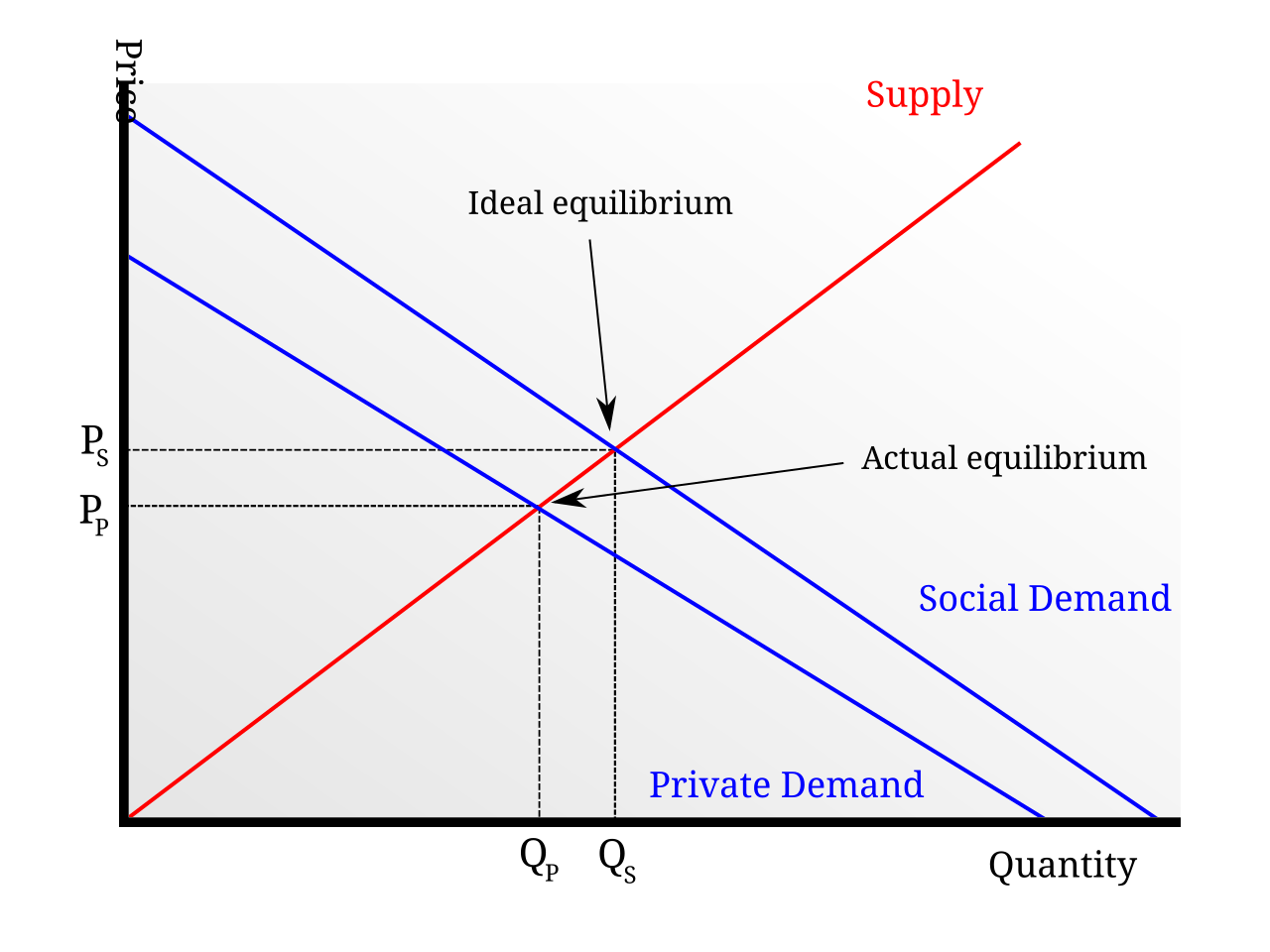AQA Specification focus:
‘Market failure occurs whenever a market leads to a misallocation of resources.’
Introduction
Markets are central to resource allocation, but they are not flawless. Market failure highlights moments when free markets misallocate resources, creating inefficiency and reduced economic welfare.
Understanding Market Failure
The Core Concept
Market failure arises when the free market, left to itself, allocates resources in a way that does not maximise economic efficiency or social welfare. Instead of reaching an optimal outcome, markets may over-provide or under-provide certain goods and services, leaving society worse off.
Market Failure: A situation where the free market, operating on its own, results in a misallocation of resources and fails to achieve allocative efficiency.
Allocative efficiency occurs when resources are used in a way that maximises total benefit to society, where price (P) equals marginal cost (MC). Market failure indicates that this condition is not being achieved.
Misallocation of Resources
What Is Misallocation?
Misallocation of resources occurs when scarce factors of production are not employed in their most valued use. This means society could gain greater welfare if resources were allocated differently.
Misallocation of Resources: The inefficient distribution of resources, where they are not directed to their most productive or valued use, resulting in welfare loss.
This can manifest in several forms:
Overproduction of goods and services with negative impacts (e.g., pollution-heavy industries).
Underproduction of goods with positive impacts (e.g., education and healthcare).
Incorrect distribution of resources between different groups of society, causing inequalities.
Conditions Leading to Market Failure
Divergence Between Private and Social Outcomes
Markets typically respond to private costs and benefits — the costs borne and benefits received by producers and consumers. However, they may ignore social costs and benefits, which include wider third-party effects.
Private costs: Direct costs to producers (e.g., wages, raw materials).
Social costs: Private costs plus external costs (e.g., pollution damaging health).
Private benefits: Direct benefits to consumers (e.g., utility from consumption).
Social benefits: Private benefits plus external benefits (e.g., improved public health from vaccinations).
When private and social measures diverge, misallocation results.

OpenStax’s Figure 12.2 shows how recognising social costs shifts the supply curve upward, moving equilibrium from E₀ to E₁. It illustrates how ignoring external costs misallocates resources. The numerical refrigerator context is extra detail not required by the AQA syllabus. Source
Key Characteristics of Market Failure
Inefficiency in Allocation
Allocative inefficiency: Resources do not maximise total welfare.
Productive inefficiency: Firms are not producing at the lowest possible cost.
Dynamic inefficiency: Lack of innovation or investment in future growth.
Distributional Concerns
Even if a market achieves efficiency, it may fail in terms of equity. For example, luxury goods may be abundantly provided, while essential goods are under-consumed due to affordability issues.
Types of Misallocation
Overproduction
Occurs when firms produce beyond the socially optimal level.

This diagram illustrates a negative externality, where MSC lies above MPC. The market equilibrium produces beyond the social optimum, and the shaded triangle represents welfare loss. The inclusion of a Pigouvian tax marker is additional detail beyond syllabus requirements. Source
Underproduction
Happens when markets do not generate enough of a beneficial good.

A positive externality diagram where MSB exceeds MPB, shifting the socially optimal quantity to the right of the free-market equilibrium. It shows why beneficial goods such as education are underprovided. The shaded welfare gain area is illustrative but not required by the syllabus. Source
Missing Markets
Some goods, such as public goods like street lighting, may not be provided at all because they are non-excludable and non-rival, leading to no profit incentive for firms.
Measuring the Welfare Loss
Economists illustrate misallocation using welfare analysis. In cases of market failure, the equilibrium quantity (where demand = supply) diverges from the socially optimal quantity.
Welfare Loss: The loss of total surplus (consumer and producer surplus) that occurs when markets fail to allocate resources efficiently.
This is often shown on diagrams as a triangle of lost welfare between social cost/benefit and private cost/benefit curves.
Examples of Misallocation in Practice
Healthcare under-provision: Left to markets, only those able to pay would access healthcare, leaving many without treatment despite strong societal benefits.
Pollution from factories: Firms may produce goods cheaply while ignoring the environmental costs imposed on wider society.
Education under-consumption: Families may underinvest in education despite its role in improving productivity and reducing inequality across society.
These examples highlight how markets often fail to align individual incentives with broader social needs.
The Significance of Market Failure in Economics
Why It Matters
Provides a justification for government intervention, such as taxation, subsidies, or regulation.
Helps explain why free markets do not always maximise welfare.
Forms the basis for debates over the role of government in the economy.
Link to Further Study
This subsubtopic establishes the foundation for understanding causes of market failure, such as public goods, externalities, and monopolies, which are explored in subsequent sections.
FAQ
Complete efficiency means resources are used to maximise total welfare, with production and consumption at the socially optimal level. Misallocation occurs when this balance is disrupted.
In misallocation, some goods are overproduced while others are underproduced, leading to welfare loss. Efficiency is the benchmark; misallocation shows the deviation from that ideal outcome.
Externalities highlight the gap between private and social outcomes.
Negative externalities (e.g., pollution) create costs that markets ignore.
Positive externalities (e.g., vaccination) generate benefits not reflected in market demand.
These gaps lead to misallocation, showing why externalities are central to the definition of market failure.
Consumers may lack perfect information or act on short-term incentives. For example, they may undervalue long-term health benefits of education or overconsume harmful goods.
This behaviour shifts demand away from the socially optimal level, creating under-consumption or over-consumption and thus misallocation of resources.
Not necessarily. Market prices reflect private costs and benefits but often exclude wider social impacts.
As a result, a product can appear cheap while imposing hidden costs on society, such as environmental damage or health risks. These costs only become clear when social costs are considered alongside private costs.
Welfare loss measures the difference between what society could gain and what it actually gains under free-market outcomes.
It provides a visual and analytical tool to show how misallocation reduces total surplus. Without the concept of welfare loss, market failure would be harder to measure and justify for policy discussions.
Practice Questions
Define the term market failure. (2 marks)
1 mark for recognising that market failure occurs when markets do not allocate resources efficiently.
1 mark for stating that this leads to a misallocation of resources and reduced economic welfare.
Explain how a divergence between private and social costs can result in market failure. (6 marks)
1 mark for identifying private costs (costs borne by producers/consumers directly).
1 mark for identifying social costs (private costs plus external costs).
1 mark for recognising that a divergence between the two means external costs are ignored.
1 mark for explaining that this leads to overproduction or underproduction compared with the socially optimal level.
1 mark for explicitly linking this to misallocation of resources.
1 mark for a clear, coherent explanation showing how welfare loss occurs.

